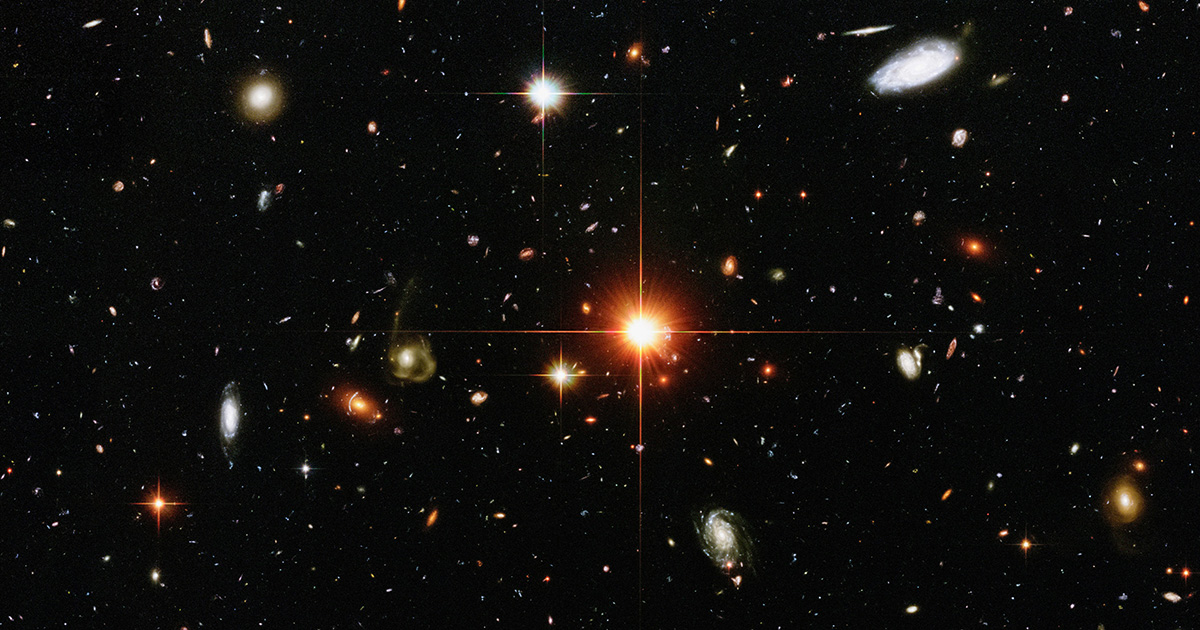The 10th Anniversary of Universe: Standard Cosmological Models, and Modified Gravity and Cosmological Tensions
A special issue of Universe (ISSN 2218-1997). This special issue belongs to the section "Cosmology".
Deadline for manuscript submissions: 31 March 2026 | Viewed by 10267

Special Issue Editors
Interests: modified gravity; cosmology; gravitational waves; Finsler cosmology; extended Friedmann equations; dark matter; dark energy
Special Issues, Collections and Topics in MDPI journals
2. INFN, Sezione di Catania, 95100 Catania, Italy
Interests: cosmological physics; CDM models; extra-planetary systems; gravitational systems
Special Issues, Collections and Topics in MDPI journals
Interests: cosmology; astrophysics; dark matter; dark energy; general relativity and its extensions
Special Issues, Collections and Topics in MDPI journals
2. Abastumani Astrophysical Observatory, Ilia State University, Kakutsa Cholokashvili Avenue 3/5, 0162 Tbilisi, Georgia
Interests: theoretical cosmology: cosmic microwave background; fundamental symmetries tests; early universe (generation of perturbations); gravitational waves; cosmological magnetic fields; large-scale structure formation; neutrinos in cosmology; dark energy and dark matter interactions; modified gravity; astro-particle physics/high energy astrophysics/fluid dynamics: cosmic magnetic fields; Hydro and MHD turbulence; gamma ray bursts; cosmic rays
Interests: cosmological physics; numerical cosmology; large scale structure formation; scalar-tensor and modified gravity theory; backreaction and inhomogeneous universes
Special Issues, Collections and Topics in MDPI journals
Interests: bounce cosmology; inflation; dark energy; curvaton; curvature perturbation; primordial gravitational waves; cosmic microwave background; modified gravity; black holes; cosmic strings; cosmological perturbations
Special Issues, Collections and Topics in MDPI journals
Special Issue Information
Dear Colleagues,
The Standard Cosmological Model is considered to be a description of our understanding of the Universe and its contents. The ΛCDM model, as the current standard cosmological model, is consistent with most astronomical observations at present, but it is not perfect; there are still many theoretical difficulties and tensions. The significant discrepancy between the H0 values measured from a local distance and from the cosmic microwave background, i.e., the Hubble tension, is the most crucial subject of the standard ΛCDM model. The observations of galaxies at epochs of 200 millions years after the big bang is another problem for the model. In addition, taking into account the abundance and nature of dark energy and dark matter, the nature of inflation, cosmological tensions such as the H0 and S8, the possible values of local anisotropy in the evolution of the universe, and the theoretical problems of the cosmological constant, the validity range of the ΛCDM model might be restricted. The absent observations of dark matter has brought several researchers to think that dark matter could not exist and that the indirect observation of its existence through several effects may be due to the fact that gravity is different from eneral Relativity.
Furthermore, if we consider that gravity geometrically accommodates in a metrical spacetime of accelerations, its description can be developed in the framework of a modified gravitation theory. In this case, anisotropic cosmological models have been developed when the underlining geometry of spacetime has a more generalized metric structure than the Riemannian one. Also, anisotropic models have been proposed to solve the Hubble tension.
Modified gravity does not exclude standard general relativity, but it has its boundaries. Modified theories of gravity extend the form of general relativity through various methods, leading to different field equations and thus to different cosmological implications. They play an essential role and contribute to modern cosmology, providing a foundation for the current understanding of physical phenomena of the Universe. Experiments with gravitational wave detectors, LIGO, VIRGO, and KAGRA amplify the hopes of modified gravity researchers that g-wave perturbations will eventually emerge, extending the models beyond the general relativity. Observations of EUCLID could also help to understand the nature of dark energy and gravity. Arrangements and solutions of H0 tension, based on the latest research, might imply new physics beyond the ΛCDM model.
Prof. Dr. Panayiotis Stavrinos
Prof. Dr. Antonino Del Popolo
Prof. Dr. Hermano Velten
Prof. Dr. Tina Kahniashvili
Prof. Dr. Jean-Michel Alimi
Prof. Dr. Yi-Fu Cai
Guest Editors
Manuscript Submission Information
Manuscripts should be submitted online at www.mdpi.com by registering and logging in to this website. Once you are registered, click here to go to the submission form. Manuscripts can be submitted until the deadline. All submissions that pass pre-check are peer-reviewed. Accepted papers will be published continuously in the journal (as soon as accepted) and will be listed together on the special issue website. Research articles, review articles as well as short communications are invited. For planned papers, a title and short abstract (about 250 words) can be sent to the Editorial Office for assessment.
Submitted manuscripts should not have been published previously, nor be under consideration for publication elsewhere (except conference proceedings papers). All manuscripts are thoroughly refereed through a single-blind peer-review process. A guide for authors and other relevant information for submission of manuscripts is available on the Instructions for Authors page. Universe is an international peer-reviewed open access monthly journal published by MDPI.
Please visit the Instructions for Authors page before submitting a manuscript. Submitted papers should be well formatted and use good English. Authors may use MDPI's English editing service prior to publication or during author revisions.
Keywords
- general relativity and its extensions
- modified gravity
- ΛCDM cosmological model
- dark matter
- dark energy
- hubble tension
- gravitational waves
- scalar-tensor theories
- cosmological anisotropies
Benefits of Publishing in a Special Issue
- Ease of navigation: Grouping papers by topic helps scholars navigate broad scope journals more efficiently.
- Greater discoverability: Special Issues support the reach and impact of scientific research. Articles in Special Issues are more discoverable and cited more frequently.
- Expansion of research network: Special Issues facilitate connections among authors, fostering scientific collaborations.
- External promotion: Articles in Special Issues are often promoted through the journal's social media, increasing their visibility.
- Reprint: MDPI Books provides the opportunity to republish successful Special Issues in book format, both online and in print.
Further information on MDPI's Special Issue policies can be found here.










